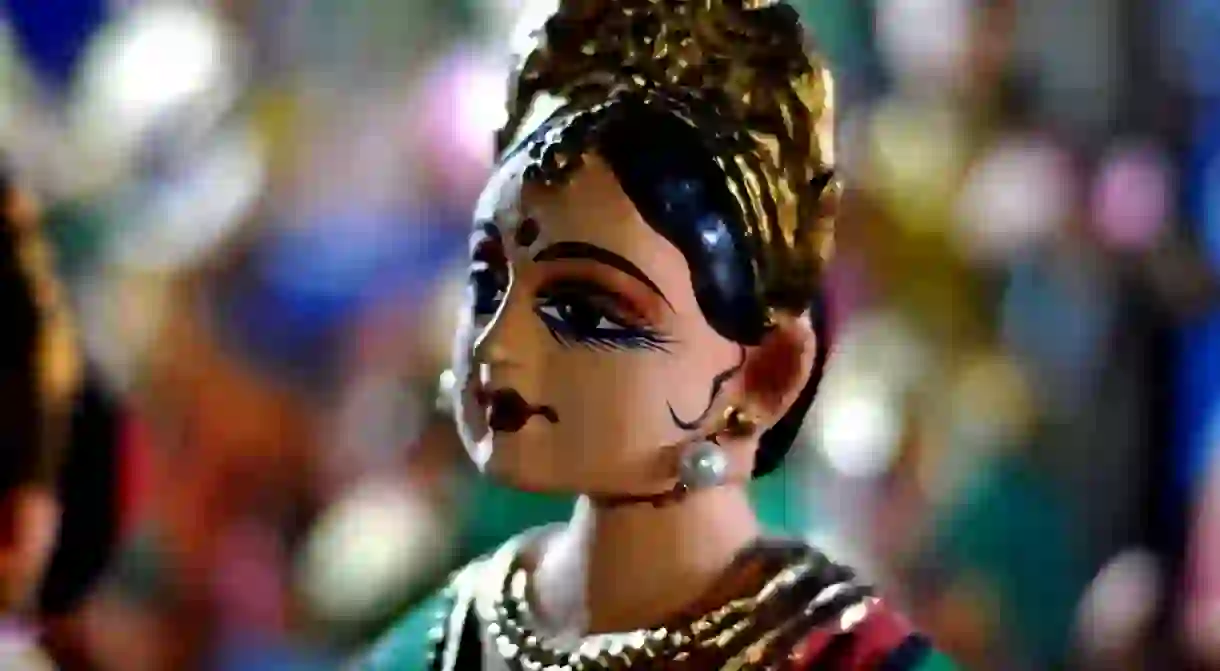The Best Things to See and Do in Thanjavur (Tanjore), India

Tamil Nadu’s ancient temple town of Thanjavur (Tanjore) has been a cultural centre for more than a millennium. It is also home to some of the most exquisite examples of Tamil architecture, including a UNESCO World Heritage Site in the Brihadeeswarar Temple. Steeped in history, today, this town is one of the most popular tourist centres in Tamil Nadu and attracts a large number of visitors from all over the world. From magnificent temples and buildings to cultural and artistic venues, here are the best things to see and do in Thanjavur.
Visit the Brihadeeswarar Temple
There can be no conversation about Thanjavur without mentioning its most popular landmark, the Brihadeeswarar Temple. This 11th-century structure is one of the foremost examples of Chola architecture and was constructed using some of the most advanced architectural techniques of the time. Apart from its visual grandeur, the temple also features several inscriptions that give a detailed account of the town’s history, going back 1,000 years. Some of the key highlights of this large temple include the Sikhara of the Sri Vimana (the top of the main Gopuram tower) and the Nandi, both of which were carved from a single block of granite, a notable feat for the time. The nearly 80-tonne Sikhara is particularly noteworthy since it was hoisted atop the 63-metre tall Vimana using a sloped elevator stretching nearly one kilometre from the centre. The temple’s main festival is Maha Shivaratri, which is celebrated during the second week of February.

Watch a Bharatanatyam recital
Thanjavur is often called the cradle of performing arts in Tamil Nadu and with good reason. Historically, the city was the capital of the ancient Chola kings who were known for their patronage of the arts and the region around the city played a crucial part in developing various art forms, including Bharatanatyam, the state dance of Tamil Nadu and Carnatic music. Thanjavur was where Bharatanatyam was codified, while the region around the town was home to the saints Thyagaraja, Syama Sastri and Muthuswamy Dikshithar, popularly known as the trinity of Carnatic Music. This culture is still alive today and Thanjavur and its surrounding areas regularly host numerous concerts and dance recitals. Watching a dance recital or a concert at the Brihadeeswarar Temple is, in particular, a must.

Head to the Saraswathi Mahal Library
One of the most important repositories of ancient Sanskrit, Tamil and South Indian literature and writing in the country, the Saraswathi Mahal Library in Thanjavur is home to nearly 49,000 volumes including palm leaf manuscripts dating back to the Sangam Era (3rd century BC to 4th century AD). Constructed in the 16th century, Saraswati Mahal is one of the oldest libraries in Asia and boasts extremely rare volumes, such as the Madras Almanac (1807), Dr. Samuel Johnson’s 1784 dictionary, a pictorial bible printed in Amsterdam in 1791, along with some 39,000 manuscripts in Sanskrit.

Take a trip to the Sivagangai Poonga
The Sivagangai Poonga, a popular tourist attraction in Thanjavur, is one of the first amusement parks ever built in the state. Apart from water rides and landscaped gardens, the park also boasts a toy train and motor-boating facilities in the Sivagangai Tank, a historically important body of water said to have been constructed by the Chola kings. The park is located near the Brihadeeswarar Temple and is a popular spot for picnics and recreational activities within the city.

Walk along the corridors of the Maratha Palace
Thanjavur’s history is unique in the annals of the region’s history since it features a confluence of Tamil and Maratha heritage. It has served as an important centre for both the Chola and Maratha kingdoms at different points in history and one of the most important examples of Maratha influence in the city is the Maratha Palace, the official historic residence of the Nayaks of Thanjavur. The palace is particularly known for being home to the popular Bhonsle family and boasts a unique architectural style defined by intricately designed durbars.
Shop for Tanjore dolls and painting
Tanjore dolls and Tanjore paintings are two of the best known cultural identifiers of this region and boast a heritage dating back centuries. While Thanjavur dolls are popular for pioneering the art of making bobblehead dolls, Tanjore painting style played an important role in influencing later Indian art forms and movements. The most popular destination for buying the dolls and paintings is in the market surrounding the Brihadeeswarar Temple, however, it is advisable to buy Tanjore paintings only from government recognized showrooms to guarantee authenticity.

See Schwartz Church
One of the oldest churches in the region, the Schwartz Church in Thanjavur boasts a unique heritage since it was constructed without the influence of imperial administration. The church is named after a German Reverend, Friedrich Schwartz of the German Lutheran denomination, who is popular for being an early European expert on the Tamil language. Schwartz is believed to have taught the Maratha king Serfoji in his childhood and Serfoji provided his patronage to the church, even funding the construction of a sculpture of Schwartz on his deathbed with Serfoji by his bedside. The church is noteworthy for its architectural style and features sculptures by famous Italian sculptor, John Flaxman.














